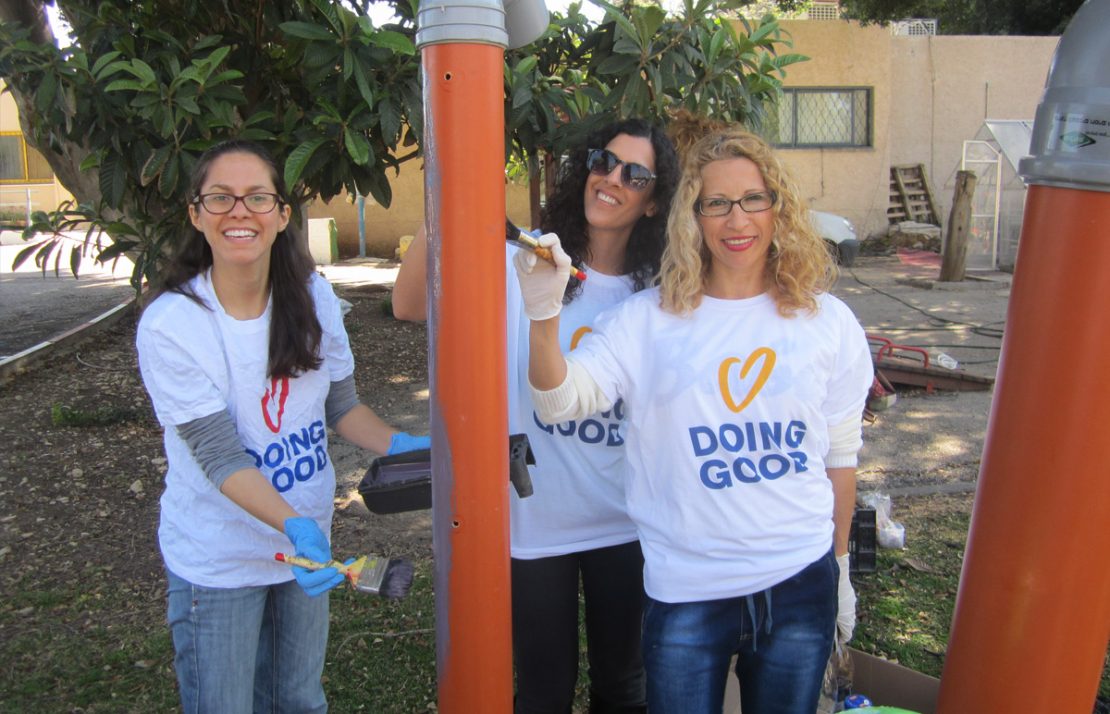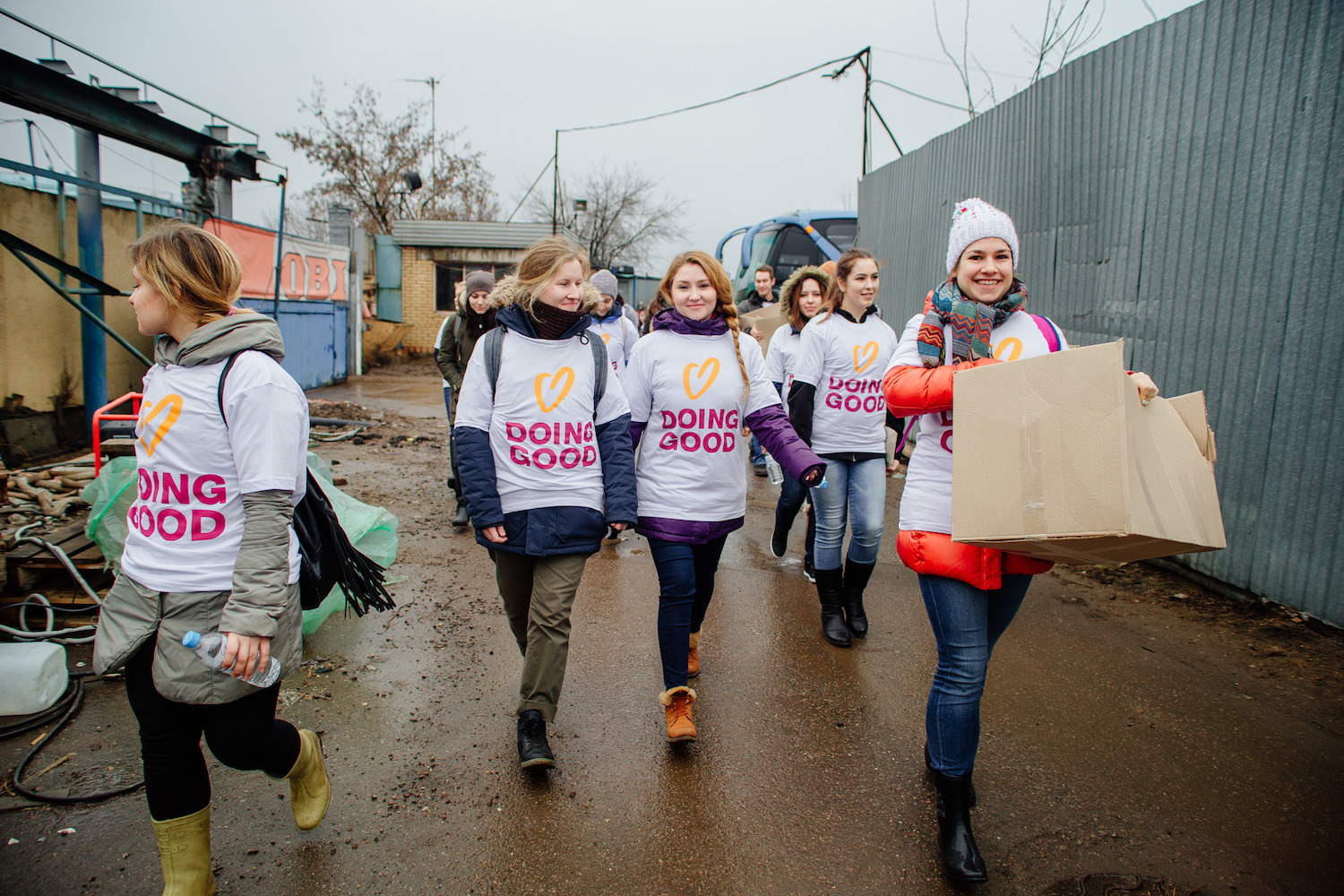
According Harvard Medical School, gratitude is a thankful appreciation for what someone receives, regardless of whether it is tangible or intangible. This emotion is easily felt when someone demonstrates their gratitude for us and easily given when we verbalize our gratitude for others. The gesture and feeling is simple, but actually has a lot of benefits for both the giver and the receiver.
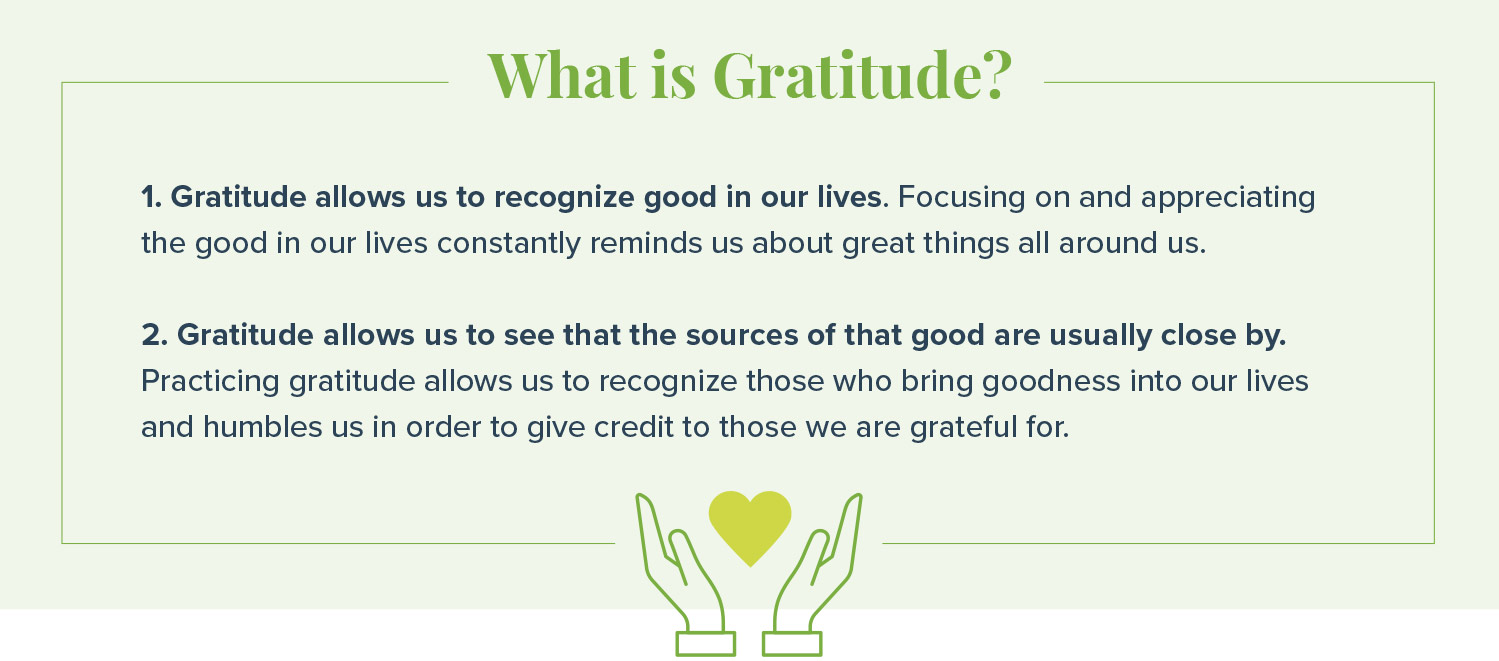
There’s science behind the practice of gratitude and its benefits. For example, a UC Davis study found that grateful teens had higher grade point averages, life satisfaction, social integration, and lower envy and depression, in comparison to materialistic teens.
Another study had three groups of participants keep a journal to record one of three things, depending on their group: what they were grateful for during the week, what aggravated them or what affected them (without asking with a positive or negative emphasis). After doing this exercise for 10 weeks, those in the gratitude-recording group were more optimistic, had better life satisfaction, exercised more and had fewer visits to to their physician. With all of these benefits, it’s no surprise that it’s important to understand and practice gratitude with those around us.
To help you learn more, we created an in-depth guide so you can learn about the benefits of practicing gratitude and identify different ways to practice gratitude everyday.
What Are the Benefits of Practicing Gratitude?
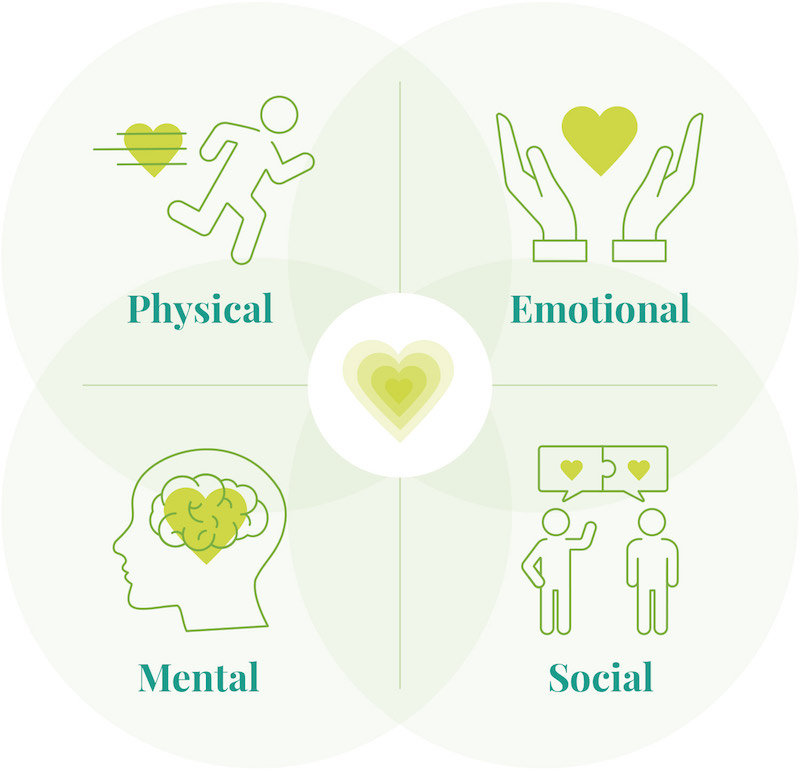
Several gratitude studies show that practicing gratitude can greatly benefit our physical, emotional, mental and social well-being.
Physical Benefits
Our physical well-being is positively impacted by an increase in gratitude practices. A 2013 study found that grateful people feel fewer aches and pains and feel overall healthier in comparison others. In another study, which we mentioned earlier, researchers found that those who kept gratitude journals were more likely to exercise. This is because gratitude gives us a more positive disposition and motivates us to pursue positive pursuits. Here are a few other physical benefits from practicing gratitude.
- Reduces symptoms of depression
- Lowers blood pressure
- Improves sleep
- Increases prevalence of physical activity
Emotional Benefits
Our emotional well-being is directly affected by an increase in gratitude. Many studies from Emmons and other researchers say that gratitude reduces feelings of envy, frustration and other toxic feelings that, in turn, increase our overall happiness and reduce depression. The reduction of negativity clears our minds to allow us to take in positive feelings. Take a look at these other emotional benefits from practicing gratitude.
- Increases long-term happiness
- Reduces envy
- Increases life-satisfaction
- Makes us more optimistic
- Lowers instances of depression
Mental Benefits
A person’s mental health is also affected by gratitude. For instance, researchers found that athletes with higher levels of gratitude from their coaches had increased self-esteem over time. Another gratitude study found that people who engaged in gratitude activities were more prone to happiness and positivity than those who did not. This is because people who express and recognize gratitude are more confident and compassionate. Peruse through these other gratitude benefits for your mental health.
- Boosts self-esteem
- Increases selflessness
- Improves decision-making
- Makes us more resilient
Social Benefits
We reap lots of social benefits when we choose to engage in gratitude practices. One investigation tested a group to see if an expression of gratitude made those on the receiving end more likely to desire friendship. It’s no surprise that those who expressed gratitude developed more friendships than those who did not. Social benefits make sense since people are usually more attracted to positive people. A greater appreciation for others is also an attractive trait since people inherently love to feel praised and acknowledged. Check out these other social benefits you gain for practicing gratitude.
- More well-liked by others
- Improves and strengthens romantic, platonic and familial relationships
- Increases social support
- Strengthens feelings of work fulfillment
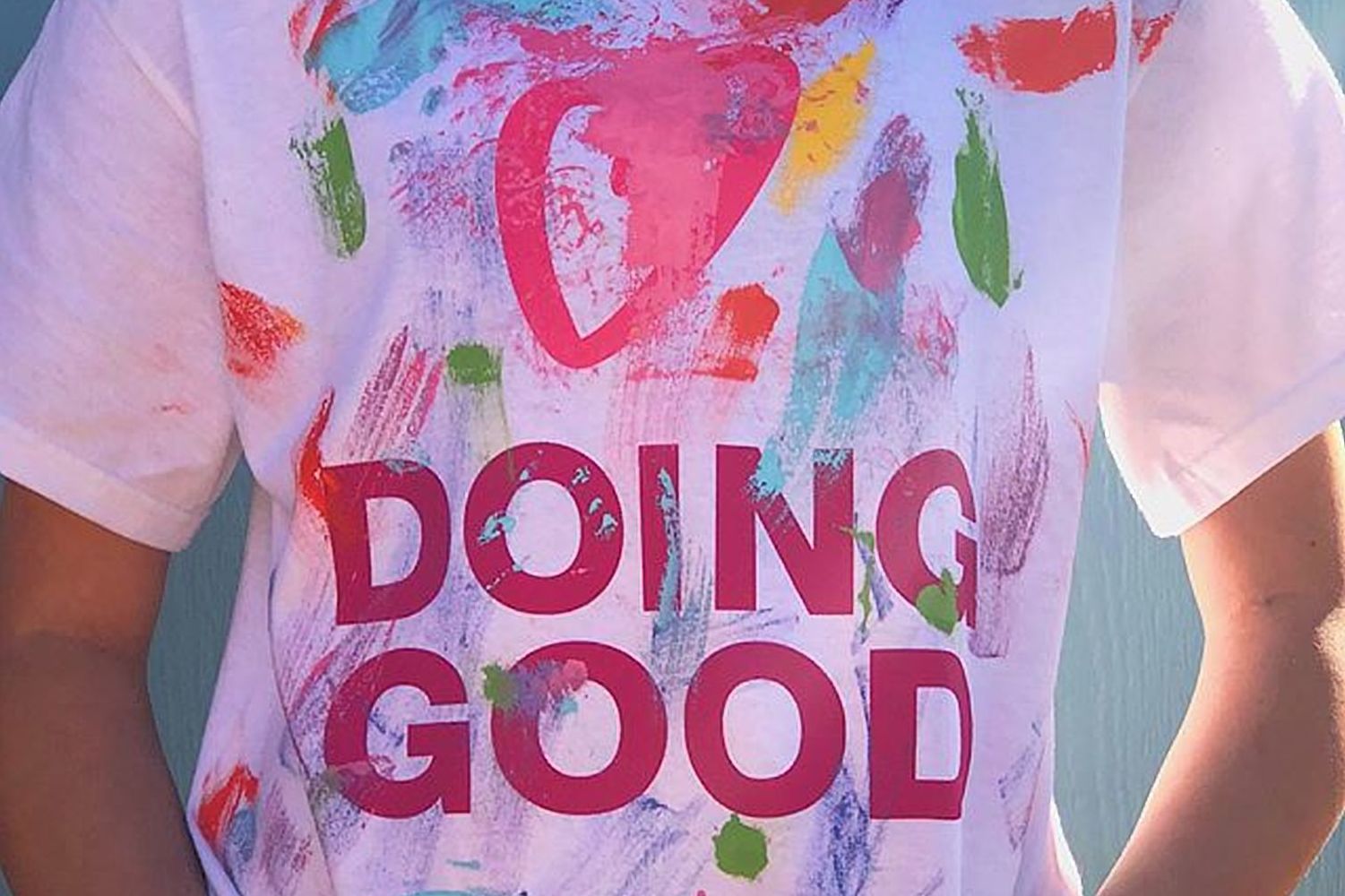
How to Practice Gratitude Everyday
There are lots of ways to practice gratitude! You can keep a gratitude journal and reflect on your own, you can call up a friend and let them know how much you appreciate them, or you can celebrate the people in your life with small token of appreciation. To help you get started with practicing gratitude, we have a listed a few different ways you can practice gratitude by yourself, with your significant other and with friends and family. Take a look and see what ideas you can take away to start practicing gratitude!
Ways to Practice Gratitude on Your Own
Practicing gratitude by yourself is a great way to start recognizing the positive things in your life. You can solely focus on the gratitude you want to recognize without distractions from others.
- Keep a gratitude journal. If pen and paper isn’t your thing, set aside some time in the day to reflect in your mind on the great things that happened.
- Take time to appreciate nature and all of the little things you may usually miss when you’re outside.
- Think about what lessons you can take away from stressful situations instead of solely focusing on your stress.
- Create a gratitude collage with pictures of people, places and things you’re grateful to have in your life.
- Write a positive review for a business that recently gave you a great experience.
- Challenge yourself to minimize or completely diminish complaining and criticizing for a short period and reflect on how much energy you put towards these feelings.
- Identify at least one positive thing that you appreciate or can learn when you’re faced with a seemingly bad situation.
- Write thank you notes whenever possible.
- Pick up a hobby you’ve been meaning to try. Making yourself happier can help you feel more grateful.
- Meditate on things you’re grateful to have in your life.
- Think about something or someone you’re thankful for right when you wake up.
- Reflect on the people or things you’re thankful for at work while you’re getting ready to go home. Keep a gratitude list at work you can use to reflect.
- Post on social media about something you’re #grateful for.
- Refrain from gossiping or speaking negatively about other people.
- Set a reminder for yourself on your phone to pause and think of something you’re grateful for in that moment.
- Take time to think about all of the people that made your meal possible the next time you cook or sit down to eat.
- Think of a positive thought whenever a negative thought pops up in your mind.
- Keep a simple gratitude list and add to it every day.
Ways to Practice Gratitude With Your Significant Other
You and your significant other likely do lots of things together to make each other’s lives better. Practicing gratitude with your partner can be a fun and meaningful experience you can use to inspire a weekly date night or daily ritual for the two of you. Research finds that couples who express gratitude are more forgiving and have stronger overall relationships.
- Do an act of service every day for your loved one.
- Savor life together with a smile using some fun jokes and puns.
- Make a simple handmade gift like DIY incense or homemade bath bombs to help them unwind and relax when they get home.
- Keep a gratitude jar at home and deposit a thought of gratitude whenever something big or small happens.
- Surprise your sweetheart with fresh flowers and berries when they get home.
- Make time at the end of the day to sit down with your significant other and listen to their day.
- Watch motivational videos at home and talk about them with your significant other afterwards.
- Tell your significant other one thing you’re grateful for before you go to bed.
- Take pictures of things you’re grateful for every day and reflect on them together at the end of the year.
- Thank everyone that helps you (e.g. waitress, cashier) when you’re out running errands together or on a date.
- Donate clothes or items to a cause that you both are passionate about.
- Cook their favorite dish and express your gratitude over a meal.
- Imagine how your life would be without them and express your thankfulness for them being in it.
Ways to Practice Gratitude With Your Friends and Family
Our friends and family are one of our biggest support systems and have done so much for us throughout our lives. From your work friends, extended family, childhood besties and everyone in between—there are so many things you can do with them to show your gratitude for them.
- Offer to help with a DIY project they’ve been working on.
- Invite them over for a celebratory glass of wine just because.
- Write a gratitude letter a hand-deliver it.
- Host a fun party just to celebrate your friends and family.
- Volunteer for a cause you believe in alongside your loved ones.
- Share what you’re thankful for around the dinner table.
- Compliment your loved ones when they do something great, no matter how big or small.
- Take someone out for a cup of coffee.
- Call home more often.
- Send a text to thank someone who recently helped you with something.
- Do random acts of kindness with your friends.
We have a few Pro Tips to help you kick off your gratitude practice:
- Be realistic. Don’t force yourself to stick with a strict routine or exhaust yourself by expressing gratitude 24/7! Although these are great intentions, you can tucker yourself out and get discouraged if you overexert yourself. Start with a few different gratitude activities to find the ones you enjoy most.
- Try something new. Journaling every day can get boring for some people. Try something spontaneous like calling up that friend who helped you out of a jam last week or picking up coffee for your coworker who helped on last month’s presentation.
- Focus on a person rather than things or experiences. Emmons says that thinking about our gratitude for people is more powerful than thinking about our gratitude for material things or experiences. So instead of thinking about the flashlight you had handy when the power went out, focus your attention on the person who gave you the flashlight or advised you to buy it.
Gratitude is a wonderful feeling with lots of real benefits! You really have nothing to lose when it comes to sharing and verbalizing the gratitude you have for your loved ones. Take a look at our list of thankful quotes and thank you messages to find the right words to express and practice gratitude with your loved ones. Send your message off with a beautiful bouquet or meaningful gift to continue expressing your thanks and appreciation.
Sources
Greater Good 1, 2 | UC Davis 1, 2 | Harvard | Positive Psychology Program 1, 2 | Psychology Today | Happier Human | Flourish: A Visionary New Understanding of Happiness and Well-Being |
This article was originally published on Pro Flowers Blog and appears here with permission.
Continue reading the Good Deeds Day Blog for inspiration on how you can incorporate doing good into your routine!



